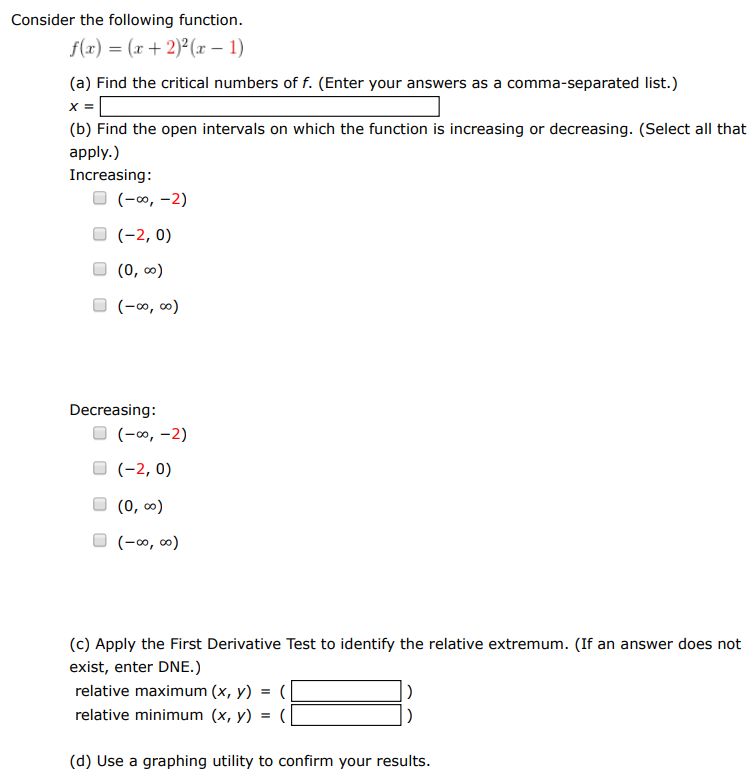Consider the following function. f(x) = (x+2)2(x−1) (a) Find the critical numbers of f. (Enter your answers as a comma-separated list.) x = (b) Find the open intervals on which the function is increasing or decreasing. (Select all that apply. ) Increasing: (−∞, −2) (−2, 0) (0, ∞) (−∞, ∞) Decreasing: (−∞, −2) (−2, 0) (0, ∞) (−∞, ∞) (c) Apply the First Derivative Test to identify the relative extremum. (If an answer does not exist, enter DNE.) relative maximum (x, y) = ( ) relative minimum (x, y) = ( ) (d) Use a graphing utility to confirm your results.
